An activity that is usually associated with burly men or professional athletes, weight lifting (or any form of strength training) is in fact, a vital pillar for overall health and wellness, whatever your age, gender or current fitness level.
Weight lifting brings with it a whole host of benefits, such as; improved strength, fat loss, better metabolism, muscular definition, improved sleep, better mental health… and much much more.
But lots of women often have doubts about weight lifting… will it make them “bulky”, will it help them lose weight, what exercises should they actually do… the list goes on.
So, we thought it was time we debunked some common myths about weight lifting and help outline what you can expect after a month of including strength training into your fitness routine. With examples and inspiring transformations to help boost motivation, this guide on weight lifting results after 1 month for females will hopefully illustrate how and why you need to start lifting!
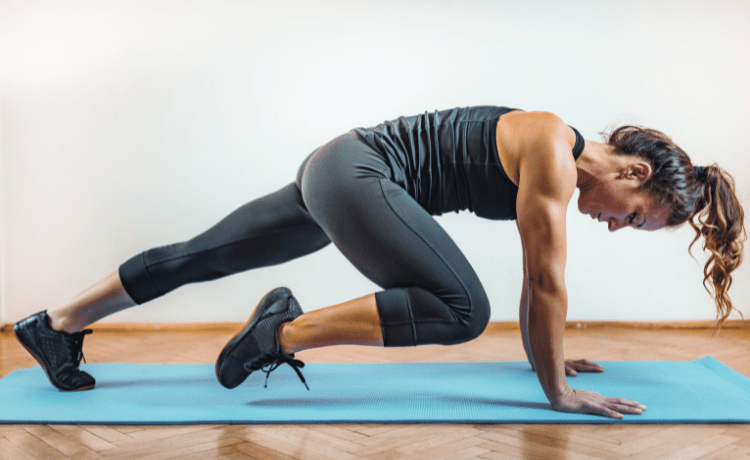
A FITTER, STRONGER YOU
A simple science-based workout plan that is proven to help build muscle, burn calories and lose weight. Suitable for all levels.
Weight Lifting Results Before Vs After – What to Expect
Strength training requires a long-term approach. 1 month is a relatively short period of time to see huge visual transformations, but your body will already be changing and benefiting from your efforts. Below, we’ve outlined 8 of the biggest things you’ll likely notice between from before you started lifting weights to a month or so afterwards.
Strength and Muscular Endurance
One of the most substantial benefits of weight lifting is improved strength. Although 1 month is quite a short time frame, you probably will already notice this improved strength quite early on. Doing daily tasks might start to feel easier and you’ll likely find you have more energy throughout the day.
How much your strength improves by largely depends on your current fitness/strength level and the type of weight lifting program you are following, as well as things like the intensity of your workouts.
Interestingly, this initial improvement in strength is actually due to your body (namely your nervous system) learning how to contract your muscles more efficiently. Your body is basically learning how to adapt to the new challenges presented to it. Similarly, as your fitness level improves, your body gets better at delivering oxygen to the muscles and using energy more effectively.
Assuming you were following a good weight lifting workout plan, you can expect to see continual improvements throughout the month.
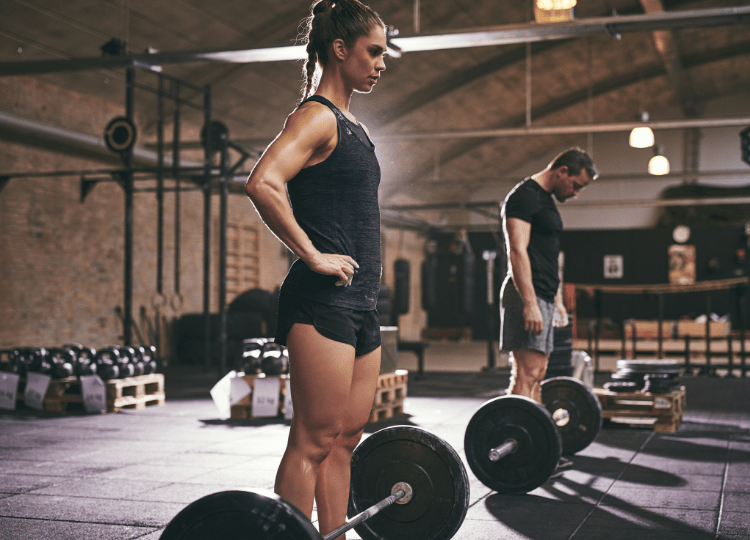
For example, before you start weight lifting, you may find you can bench press just a barbell with no plates. By the end of the 1st month, you may already feel comfortable to put some plates on each side… illustrating this increased strength.
You’re unlikely to add huge amounts of weight to your workouts in your first month, but if you can increase the weight, even by just a few pounds, it shows your muscles are adapting and getting stronger.
As well as absolute strength, muscular endurance will also be reflected in improvements in your strength, illustrated by the ability to do more repetitions during a set.
1 Rep Max Vs Repetitions
There’s two ways you could measure your strength improvements. The first way is common in sports like powerlifting and with many gym goers, and that’s to record the maximum weight you could lift during an exercise (such as with a bench press, or a dumbbell sumo deadlift). The other way would be to keep the weight the same but focus on increasing the amount of repetitions during each set (although if you can do 15+ reps, you would probably benefit from increasing the weight).
Lean Muscle Mass
As you complete weight lifting workouts, your muscle fibres will break down and repair stronger and thicker. This, essentially, is how muscle is created.
This process takes time, so after 1 month, you’re unlikely to see any significant changes in the size of your muscles… but you’re laying the foundations. If you stay consistent, over the following months, you are likely to see changes in your muscles. As a rough guide, you could perhaps expect to gain a pound of muscle after the first month, but this will vary quite considerably from person to person.
Especially as women tend to have much lower levels of testosterone, you really don’t need to worry about becoming “bulky” or developing large muscles. A good diet and following a relevant fitness plan can keep you looking toned and sculpted from weight lifting. It’s actually very hard to bulk-up by just lifting heavy weights, without increasing your calorie intake too.
When we talk about increasing muscle mass, what we’re actually talking about is swapping fat for muscle. Muscle is healthier, looks better and like we say, doesn’t mean you’ll be “bulky” (in fact, the complete opposite, you’ll actually look more toned and sculpted).
Muscle Memory
If you’ve lifted weights or done resistance training in the past, you may find you build muscle quicker than someone who is completely starting from scratch. This is due to what is referred to as “muscle memory.“
Muscle Definition
As we previously mentioned about creating lean muscle mass, your body fat percentage will likely drop as you’re replacing fat for muscle.
As your body fat percentage continues to drop, you’ll start to notice more definition in your muscles. Whether that’s your arms, back, or legs, this definition shows that your body has replaced fat stores with useful lean muscle.
Again, depending on your starting fitness level and weight, this change may be more visible for some than others after a month.
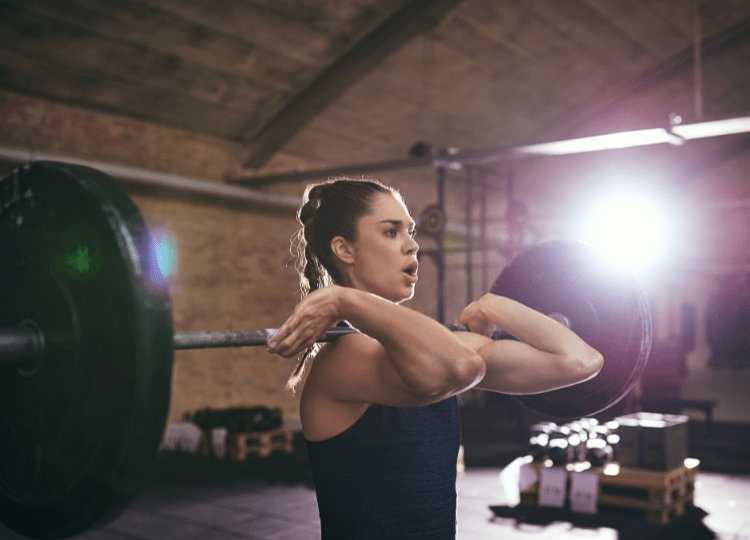
Fat Loss
Weight lifting is a surprisingly effective way to lose weight. This is largely due to the fact your body continues to burn calories after the workout. By preserving muscle mass, weight lifting helps to improve your metabolism too.
Although you’ll likely burn more calories during a cardio workout, including weight lifting as well, is hard to argue against if your goal is weight loss.
It is, however, important to note that diet is paramount to maintain fat loss, and lifting weight isn’t enough on its own. If you want to lose fat, thinking more consciously about what you’re eating during the day is something to consider.
Also, remember muscle is denser than fat… so the scales may not be telling the whole story, especially if you’re quite light to begin with. Looking at yourself in the mirror will likely be an easier way to see the benefits of the fat loss. Or using a device to measure body fat, as opposed to your overall weight.
If you have quite a lot of excess fat, you may find you do lose quite a notable amount of fat and weight, even after just 1 month. Generally speaking, the more excess fat and weight you have, the quicker you’ll probably be able to lose weight to begin with (in absolute terms).
Mental Health
Weight lifting, along with any form of exercise, can have a tremendous impact on your mental health. It will release endorphins as well as helping you feel more comfortable in your body.
Lifting weights has also been shown to improve your mood, decrease stress and help manage anxiety/depression… so if you want a boost in your mental health, weight lifting is a great activity.
You may find you instantly benefit from this after your first workout, especially if you’re not used to exercising.
Improved Metabolism
Weight lifting changes your muscles, which helps in raising your metabolism, which essentially means you can burn more calories doing the same activities as before. If you want to lose weight, this change in body composition is a huge advantage.
Think of it like this… your muscles are able to burn more calories than fat stores can, so by swapping fat for muscles, you are able to burn more calories, creating a powerful flywheel of positive influence. As a guide, research has shown 1 pound of muscle burns between 10 and 30 calories per day, compared to 1 pound of fat burning between 5 and 10 calories a day.
The ability to change your metabolism will vary from person to person.
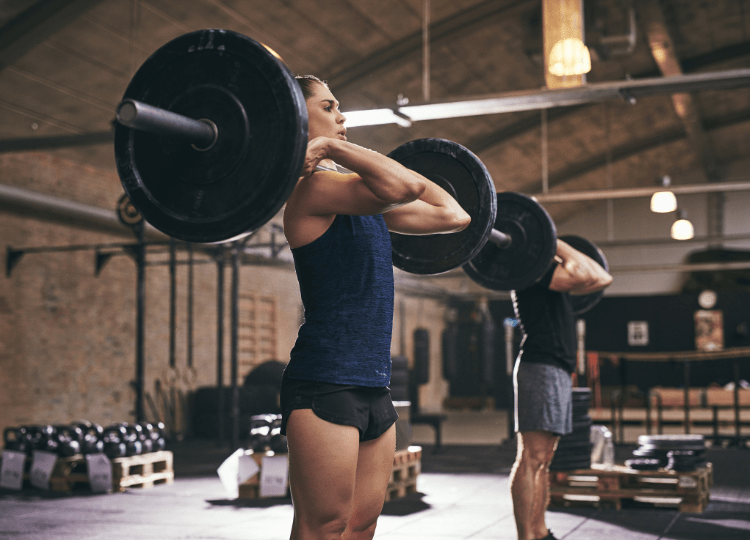
Muscle Recovery
You’ll probably notice by the end of the first month of weight lifting, your body copes with the workouts better… and doesn’t leave you feeling so sore the following days (like it probably will after the first week).
This ability to handle workouts better shows your body is adapting to the new demands you are creating.
This will likely transfer into other areas of your life. For example, a day spent gardening might not be as tiring as before, because your muscles are able to handle lifting extra weight more comfortably.
Ease Into Things
Although you want to up the intensity and push yourself… during your first few workouts, you don’t want to go overboard and risk either injury or severe muscle soreness (DOMS). Treat the first couple of workouts as an introduction for your muscles and ensure they can handle things before trying to push yourself.
Improved Posture
This is an under-rated benefit that you will probably start to notice quite early on. Weight lifting can help to correct bad posture from sitting at a desk all day.
You can activate muscles that aren’t getting engaged during your daily life. For example, if you sit all day, you may find your glutes aren’t being activated like they should. This can actually create tightness in your posterior chain which leads to poor posture and back ache. Weighted back squats, glute kickbacks, and all sorts of glute exercises can help fix this.
5 Things to Know Before You Start Lifting Weights
Chloe Gottschalk outlines 5 things she wished she knew before she started lifting weights in the video below. This outlines the common misconceptions about weight lifting for women and tips for getting started.
Considerations
Body Type
Weight lifting results after 1 month will vary from person to person, largely influenced by your body type and genetics.
Try not to compare yourself to others and focus on making sustainable improvements over time.
Create a fitness plan that works for you, and make sure it’s achievable.
Diet
Diet and exercise really do go hand in hand. It’s very hard to out-train a bad diet.
Your diet is your fuel… it will give you the energy you need for workouts, and give your muscles and body the nutrients and protein needed to build muscle.
Especially if you strive for a lean physique, your diet needs careful consideration.
As a general rule of thumb, diets with plenty of protein, veg, fruit and low levels of sugar, are going to support weight loss goals.
Lacey outlines how she lost weight without cardio in the video below. She attributes weight lifting, getting enough sleep and a good diet as the most important things.
Technique and Fitness Level
Your current fitness level and experience with gym equipment is also a consideration when trying to set expectations about weight lifting or strength training targets.
Exercises like deadlifts, require good technique, and this may take some practice.
Good technique is incredibly important in weight lifting and strength sports, so take your time and really ensure you feel comfortable with the movements before increasing the weight or resistance.
You also want to ensure you follow a proper workout warm up to reduce the risk of injury.
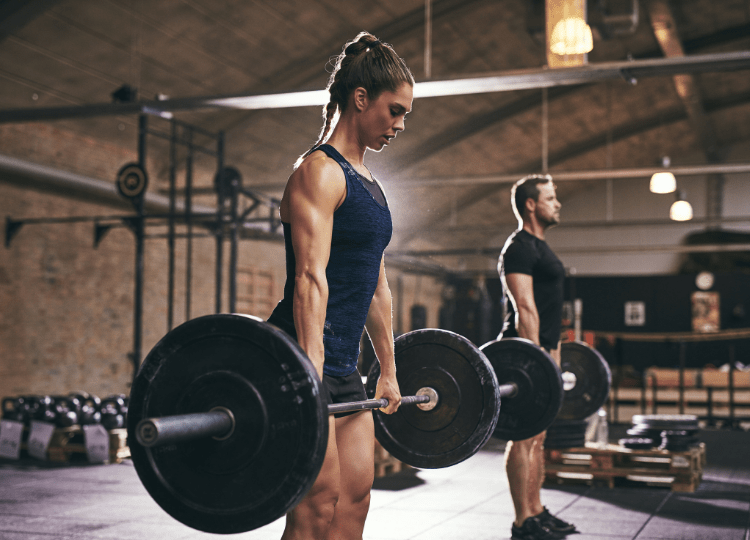
Recovery
Recovery is a vital component to weight lifting.
Getting enough rest, sleep and caring for your muscles with mobility and stretching routines, will most certainly have an impact on your overall progression. Stretching helps to aid better range of motion in the joints too, which can help increase weight lifting performance.
Different training plans will include different approaches to recovery, but during a week you’ll likely have at least 2 or 3 days of pure rest, without lifting any weights.
It’s during these rest days that your muscles are able to repair and rest… helping to avoid injuries, which would set you back.
When you start lifting weights, you’ll also find you probably need more sleep too. You just need to listen to your body and ensure you give it the rest it needs.
Weight Lifting Program
Looking for an Effective Weight Lifting Program?
If you want a simple, affordable weight lifting program to follow, that is completely customized to your fitness level and available equipment, we’d recommend checking out Fitbod. After trying more than our fair share of fitness apps, that’s currently our top pick.
Intensity
It’s very easy to go through the motions for 1 month, or even longer… and get disheartened by the lack of progress. But ultimately, you need to push yourself if you want to see results.
If you’re not breaking a sweat at all, chances are you could have probably pushed yourself further during the workout.
Using a personal trainer or a training buddy is a great way to naturally boost intensity.
FAQs
How fast can a woman get results by lifting weights?
Ultimately, this really depends on what “results” you are aiming for. The release of feel-good endorphins will be felt after the very first workout, but losing weight or increasing muscular definition will take longer (depending on factors like workout intensity, genetics, fitness level and programming).
After lifting weights consistently for a month you’ll start to feel and see improvements. By the end of month two, these improvements will often start to be very visible.
But you need to maintain your efforts to maintain the results.
Weight lifting vs cardio
A healthy, well-balanced fitness plan should include both resistance training (like weight lifting) and cardio. There’s no reason to choose one over the other… you’ll benefit from both.
How much weight can you lose in a month lifting weights?
This really depends so much on your starting weight, your genetics, exercise plan and your diet.
Does lifting weights burn belly fat?
Yes. Since lifting weights helps to swap fat for muscle, and muscle helps to burn more calories than fat does, weight lifting helps to burn belly fat. Exercises that focus on the abs and obliques (check out this guide on obliques crunches) can also help tone the stomach too.
Bottom Line
Weight lifting, or any form of strength training more specifically, is a great addition to any fitness routine.
Although women often have doubts, the benefits are substantial and consequently, it’s worth giving a go. Just start with very light weights and ensure you follow correct form.
Within a month, you’ll likely already see significant improvements in your strength and body, and this should hopefully inspire you to keep it up.
Related Articles
